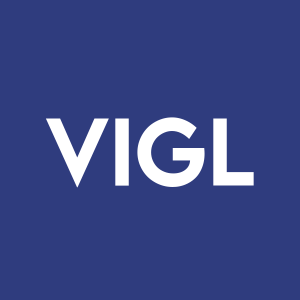Vigil Neuroscience Expands VGL101 Phase 1 Trial to Australia
Rhea-AI Summary
Vigil Neuroscience has received approval from the Human Research Ethics Committee in Australia to conduct a Phase 1 trial of VGL101 in healthy volunteers, allowing doses above 20 mg/kg. The FDA has also suggested considering a 30 mg/kg dose for the U.S. trial. Vigil is on track to report topline data from this trial and initiate a Phase 2 trial for ALSP in Q4 2022. The company emphasizes the favorable safety and pharmacokinetic profile of VGL101, aimed at treating neurodegenerative diseases, specifically ALSP.
Positive
- Approval received to initiate a Phase 1 trial for VGL101 in Australia.
- FDA suggests exploring a 30 mg/kg dose for the U.S. trial.
- Remains on track to report topline data and initiate Phase 2 trial in ALSP in Q4 2022.
- Favorable safety, tolerability, and pharmacokinetic profile of VGL101 reported.
Negative
- Partial clinical hold remains on dosing above 20 mg/kg in the U.S.
News Market Reaction 1 Alert
On the day this news was published, VIGL gained 10.20%, reflecting a significant positive market reaction.
Data tracked by StockTitan Argus on the day of publication.
- Received approval from the Human Research Ethics Committee in Australia to initiate a Phase 1 trial of VGL101 in healthy volunteers at doses above 20 mg/kg -
- Considering administration of a 30 mg/kg dose in VGL101 Phase 1 trial in the U.S. -
- Remain on track to report topline data from VGL101 Phase 1 healthy volunteer trial and to initiate the Phase 2 trial in ALSP in the fourth quarter of 2022 -
CAMBRIDGE, Mass., June 07, 2022 (GLOBE NEWSWIRE) -- Vigil Neuroscience, Inc. (Nasdaq: VIGL), a clinical-stage biotechnology company committed to harnessing the power of microglia for the treatment of neurodegenerative diseases, today announced it has received approval from the Australian Human Research Ethics Committee (HREC) to initiate a Phase 1 study of VGL101 in healthy volunteers without dosing restrictions. Under the approved protocol, the Company will evaluate VGL101 at doses above 20 mg/kg allowing for immediate exploration of higher doses with a focus on maintaining optionality for future indications.
In regard to the VGL101 Phase 1 trial in the U.S., the Food and Drug Administration (FDA) has suggested that Vigil may wish to consider the feasibility of administration of a 30 mg/kg dose. This progress with the FDA was made in response to Vigil’s most recent submission of data from a 6-month GLP toxicology study in nonhuman primates (in which there were no observed adverse findings) and Phase 1 single ascending dose clinical data that includes patients dosed at 20 mg/kg. The partial clinical hold that limits dosing above 20 mg/kg remains in effect while Vigil continues to work with the FDA to lift the partial clinical hold. Importantly, Vigil remains on track to report VGL101 Phase 1 topline data and initiate the Phase 2 proof-of-concept trial in adult-onset leukoencephalopathy with axonal spheroids and pigmented glia (ALSP) patients in the fourth quarter of 2022.
“We are excited about the progress we have made with our development of VGL101. We’re looking forward to initiating the VGL101 healthy volunteer study in Australia as we work to fully evaluate VGL101 for safety and efficacy in ALSP and to maintain optionality to support patients with rare and common neurodegenerative diseases beyond ALSP,” said Ivana Magovčević-Liebisch, Ph.D., J.D., President and Chief Executive Officer of Vigil. “Most importantly, we remain on track to initiate a Phase 2 trial in ALSP patients in the fourth quarter of 2022.”
"We are encouraged by the favorable safety, tolerability and pharmacokinetic profile of VGL101 based on data from our ongoing Phase 1 healthy volunteer trial to date. Although we believe that 20 mg/kg is a clinically relevant dose to assess the therapeutic effects of VGL101 in ALSP, we look forward to continuing to explore a wider dose range and cerebral spinal fluid target engagement biomarkers in healthy volunteers. We believe that, collectively, the data from the Phase 1 trial will contribute to declaration of biological target engagement and help further refine dose selection for the Phase 2 proof-of-concept trial in ALSP,” said Spyros Papapetropoulos, M.D., Ph.D., Chief Medical Officer of Vigil.
About VGL101
VGL101, Vigil’s lead product candidate, is a fully human monoclonal antibody agonist targeting human triggering receptor expressed on myeloid cells 2 (TREM2), which is responsible for maintaining microglial cell function. TREM2 deficiency is believed to be a driver of certain neurodegenerative diseases. VGL101 is in development for the treatment of rare microgliopathies, such as adult-onset leukoencephalopathy with axonal spheroids and pigmented glia (ALSP), as well as other neurodegenerative diseases for which TREM2 and/or microglia deficiency is believed to be a key driver of disease pathway.
About Vigil Neuroscience
Vigil Neuroscience is a microglia-focused therapeutics company focused on developing treatments for both rare and common neurodegenerative diseases by restoring the vigilance of microglia, the sentinel immune cells of the brain. We are utilizing the tools of modern neuroscience drug development across multiple therapeutic modalities in our efforts to develop precision-based therapies to improve the lives of patients and their families.
Forward-Looking Statements
This press release includes certain disclosures that contain “forward-looking statements” of the Company that are made pursuant to the safe harbor provisions of the federal securities laws, including, among others, express or implied statements regarding the Company’s plans and expectations for VGL101, including next steps and timing for the Phase 1 and Phase 2 clinical trials; plans to support patients with diseases beyond ALSP; beliefs about the data from the ongoing Phase 1 trial, including the favorable safety, tolerability and pharmacokinetic profile of VGL101 and the impact of such data on biological target engagement and future clinical activity. Forward-looking statements are based on Vigil’s current expectations and are subject to inherent uncertainties, risks and assumptions that are difficult to predict. Factors that could cause actual results to differ include, but are not limited to, risks and uncertainties related to uncertainties inherent in the identification and development of product candidates, including the conduct of research activities and the initiation and completion of preclinical studies and clinical trials; uncertainties as to the availability and timing of results from preclinical studies; the timing of the Company’s ability to submit and obtain regulatory clearance for investigational new drug applications; the Company’s ability to initiate and complete its current and expected clinical trials and its ability to work with the FDA to successfully remove the partial clinical hold; whether results from preclinical and early clinical studies will be predictive of the results of later studies and clinical trials; whether Vigil’s cash resources will be sufficient to fund its foreseeable and unforeseeable operating expenses and capital expenditure requirements; uncertainties associated with the impact of the ongoing COVID-19 pandemic on its business and operations; as well as the risks and uncertainties identified in the Company’s filings with the Securities and Exchange Commission (SEC), including Vigil’s Quarterly Report on Form 10-Q for the quarter ended March 31, 2022, as well as any subsequent filings with the SEC, which are available at the SEC’s website at www.sec.gov. Forward-looking statements contained in this announcement are made as of this date, and Vigil undertakes no duty to update such information except as required under applicable law. Readers should not rely upon the information on this page as current or accurate after its publication date.
Internet Posting of Information
Vigil routinely posts information that may be important to investors in the ‘Investors’ section of its website at https://www.vigilneuro.com. The Company encourages investors and potential investors to consult our website regularly for important information about Vigil.







